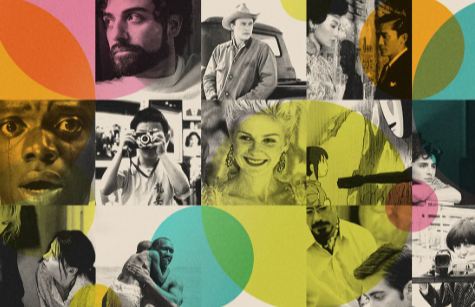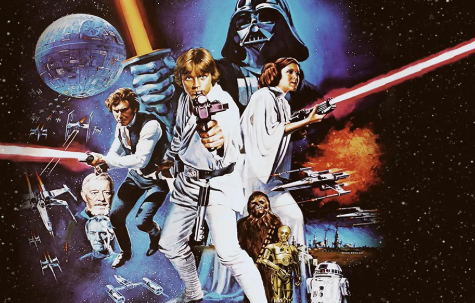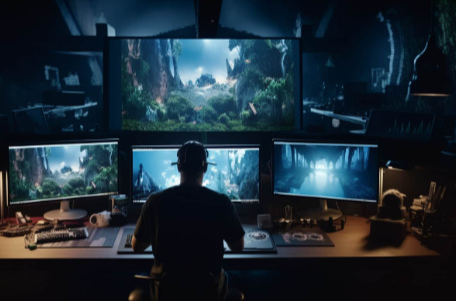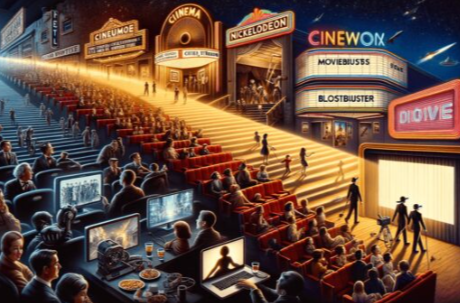How Movies Influence Culture and Society: A Deep Dive

Movies serve as both reflections and shapers of cultural landscapes. They encapsulate societal values while challenging entrenched beliefs. Through diverse narratives, films not only entertain but also provoke thought and discussion. This dual role raises critical questions about their power and responsibility in influencing public perception. What happens when cinema confronts uncomfortable truths? The implications of this interaction are profound and warrant further exploration.
The Evolution of Cinema and Its Cultural Impact
As cinema emerged in the late 19th century, it not only transformed entertainment but also began to shape societal norms and cultural narratives.
Silent films initially captivated audiences through innovative cinematic techniques, laying the groundwork for genre evolution and complex narrative structures.
The advent of synchronized sound marked a significant technological advancement, enhancing visual storytelling and deepening audience engagement.
Film festivals became crucial platforms for showcasing international cinema, fostering cross-cultural dialogue and appreciation.
As film criticism grew, it challenged filmmakers to explore themes reflective of societal complexities.
The interplay between cinematic innovation and audience perception reveals how movies have influenced cultural landscapes, inviting viewers to question, reflect, and ultimately embrace the transformative power of the moving image.
Film as a Reflection of Societal Values
While many cinematic narratives entertain, they simultaneously serve as mirrors reflecting the prevailing values and beliefs of society.
Films often encapsulate cultural identity, showcasing the nuances of different groups while revealing shared human experiences. Through compelling storytelling, they tackle moral dilemmas that resonate with audiences, prompting reflection on ethical choices and societal norms.
By portraying diverse perspectives, cinema challenges audiences to confront their own values and beliefs, serving as a catalyst for introspection and dialogue. The complex interplay of character motivations and societal pressures reveals the underlying tensions within a culture, ultimately influencing how individuals perceive themselves and their world.
Thus, film transcends mere entertainment, becoming a vital avenue for exploring and understanding the fabric of contemporary society.
Read more: The Evolution of Cinema: From Silent Films to Streaming Platforms
Challenging Stereotypes Through Storytelling
Movies serve as a powerful medium for challenging entrenched stereotypes, particularly through the exploration of gender norms, racial representation, and evolving LGBTQ+ narratives.
By presenting multifaceted characters and stories that defy conventional expectations, filmmakers can dismantle harmful biases and foster greater empathy within society.
This transformative potential of storytelling highlights the crucial role of cinema in shaping a more inclusive cultural landscape.
Breaking Gender Norms
Although traditional narratives have often confined characters to rigid gender roles, contemporary cinema increasingly challenges these stereotypes through innovative storytelling.
Films that embrace gender fluidity and feminist representation dismantle cultural stereotypes, inviting audiences to reconsider societal expectations. By portraying male vulnerability, these narratives confront toxic masculinity, showcasing the emotional depth that defies traditional norms.
Similarly, stories centered on female empowerment and queer identity promote gender equality, offering a platform for identity exploration that resonates with diverse viewers.
The evolution of character arcs reflects a growing recognition that gender is not binary but a spectrum. As filmmakers push boundaries, they ignite conversations that foster understanding and acceptance, ultimately reshaping cultural dialogues around gender norms and encouraging a more inclusive society.
Racial Representation Matters
Racial representation in film serves as a critical lens through which societal attitudes and biases are both reflected and challenged. The implementation of diversity quotas has sparked essential discussions about casting choices and representation gaps, pushing the industry toward greater cultural authenticity.
Intersectional narratives not only enrich character development but also heighten audience engagement by presenting multifaceted perspectives. However, the balance between artistic expression and historical accuracy remains contentious, revealing behind-the-scenes dynamics that can hinder genuine representation.
Film festivals increasingly showcase works that defy stereotypes, amplifying voices that have long been marginalized. Ultimately, the evolution of racial representation in cinema is a powerful catalyst for societal change, compelling audiences to confront their own biases while fostering a deeper understanding of diverse experiences.
LGBTQ+ Narratives Evolving
As the landscape of cinema continues to evolve, LGBTQ+ narratives have emerged as vital components in challenging long-standing stereotypes and societal misconceptions. Through queer representation and intersectional narratives, filmmakers have begun to explore the complexities of identity, weaving authenticity into character development.
Historical context plays a crucial role in this storytelling evolution, as films reflect the struggles and triumphs of the LGBTQ+ community, often portraying activism in ways that resonate with audiences. Increased media visibility has fostered cultural acceptance, shifting audience reception from skepticism to celebration.
As these narratives unfold, they not only dismantle outdated notions but also highlight the richness of diverse experiences, underscoring the importance of representation in shaping societal attitudes and inspiring change.
The Role of Documentaries in Shaping Public Opinion
How do documentaries wield the power to shape public opinion in a rapidly evolving media landscape? By crafting impactful narratives through visual storytelling, documentaries engage audiences on emotional and intellectual levels, fostering social awareness and critical thinking.
They often serve as catalysts for public discourse, illuminating overlooked issues and challenging the status quo. The ethical considerations involved in advocacy filmmaking compel creators to present historical context accurately, influencing audience reception and prompting shifts in societal attitudes.
In an age of information overload, the ability of documentaries to distill complex subjects into relatable tales is invaluable. As they provoke thought and inspire action, these films not only reflect but actively shape the cultural zeitgeist, making them essential tools for societal change.
The Influence of Genre on Cultural Norms
Documentaries exemplify the power of narrative to influence societal perceptions, yet the broader cinematic landscape reveals the profound impact of genre on cultural norms.
Genre evolution shapes audience expectations, dictating how narratives reinforce or challenge cultural stereotypes. Conventional genre frameworks often perpetuate limiting views, while genre fusion introduces complexity, allowing for richer social commentary.
The significance of subgenre identity becomes apparent as filmmakers navigate established conventions, pushing boundaries to reflect evolving societal values. This interplay between genre conventions and cultural identity fosters a dynamic discourse, where films not only mirror society but also provoke shifts in thought.
Thus, the influence of genre goes beyond entertainment, becoming a potent vehicle for cultural transformation and deepening understanding of diverse experiences.
Movies as Catalysts for Social Movements
Movies possess a unique power to galvanize individuals into collective action, often transforming passive spectators into active participants in social movements.
By crafting narratives that resonate with societal grievances, films shape public perception and provoke critical discourse on pressing issues.
This dynamic interplay between cinema and activism underscores the potential of visual storytelling to not only reflect but also influence the trajectory of social change.
Inspiring Collective Action
While narratives on the silver screen often entertain, they can also serve as powerful catalysts for social movements, galvanizing audiences to engage in collective action.
Films that portray struggles for justice and empowerment ignite activism inspiration, prompting viewers to reflect on their own societal roles. By illustrating the plight of marginalized communities, these narratives foster empathy, encouraging community engagement that transcends individual experiences.
Iconic cinematic moments often motivate grassroots mobilization, transforming passive spectators into active participants. As audiences resonate with the characters’ journeys, they are compelled to confront injustices in their own lives.
Thus, movies not only entertain but also challenge societal norms, urging collective responsibility and inspiring movements that seek to reshape the world toward a more equitable future.
Shaping Public Perception
Through their compelling narratives and vivid imagery, films possess the unique ability to shape public perception, often acting as catalysts for social movements. By fostering audience engagement and stimulating media literacy, films encourage viewers to critically analyze cultural discourse.
The emotional resonance achieved through visual storytelling cultivates narrative empathy, allowing individuals to connect deeply with the experiences portrayed onscreen. This shared understanding can challenge societal norms and inspire collective action.
Furthermore, film analysis reveals how narratives reflect and influence viewer identity, often invoking cultural nostalgia to critique contemporary issues. In this way, cinema not only entertains but also serves as a powerful medium for societal critique, galvanizing audiences toward meaningful change and reimagining societal values.
The Globalization of Film and Cultural Exchange
How might the globalization of film serve as a conduit for cultural exchange and understanding?
The rise of global film has transformed cinema into a platform for rich cultural exchange, fostering cinema diversity and allowing for international collaboration. Through cross-cultural narratives, filmmakers can share unique storytelling traditions with a global audience, breaking barriers and encouraging dialogue.
Film festivals play a pivotal role in this exchange, showcasing diverse voices and perspectives while amplifying the media influence of underrepresented cultures. As cultural diplomacy evolves, films become tools for empathy, cultivating mutual respect and understanding among nations.
Ultimately, the globalization of film not only entertains but also enlightens, bridging cultural divides and enriching the tapestry of human experience.
The Psychological Effects of Film on Audiences
The globalization of film not only facilitates cultural exchange but also profoundly impacts the psychological landscape of audiences worldwide. Films elicit a spectrum of emotional responses, shaping viewers’ perceptions and beliefs. This engagement can lead to catharsis, allowing individuals to confront their own emotions vicariously through characters.
Moreover, cognitive processing is activated as audiences analyze narratives and themes, often reflecting societal issues that resonate deeply. The interplay between emotional engagement and cognitive reflection fosters a transformative experience, empowering individuals to explore their values and question prevailing norms.
Thus, films serve as catalysts for introspection and social dialogue, revealing the intricate ways in which cinema molds the psyche, underscoring its potential to inspire change and promote personal freedom.
Conclusion
In essence, movies serve as the cultural kaleidoscope through which society views itself, constantly shifting and refracting its values. Just as a single piece of glass can alter the colors seen through it, a powerful film can reshape public discourse. For instance, after the release of “12 Years a Slave,” discussions around systemic racism surged, illustrating cinema’s ability to ignite change. Ultimately, films not only reflect our world but also challenge us to envision a more just and empathetic society.



